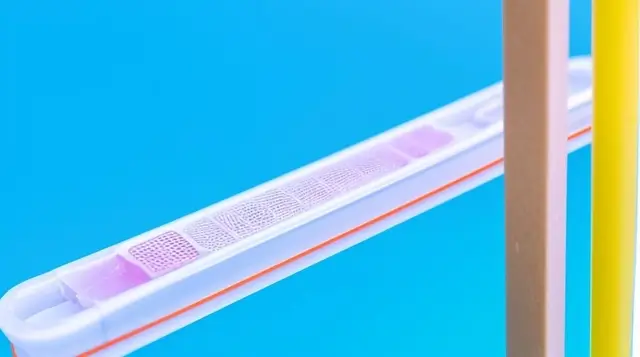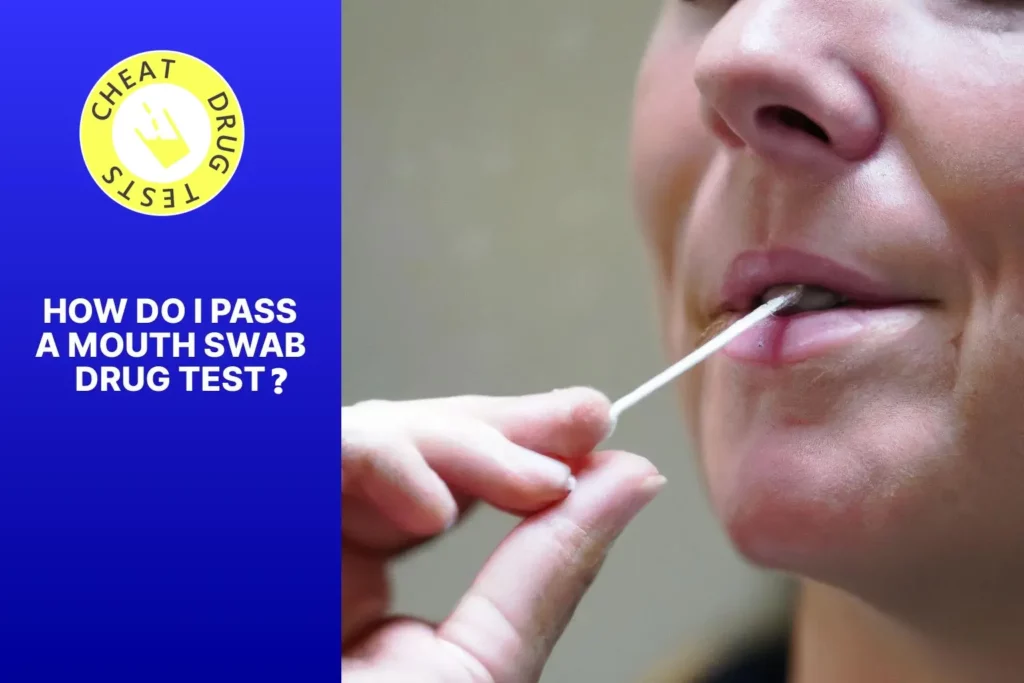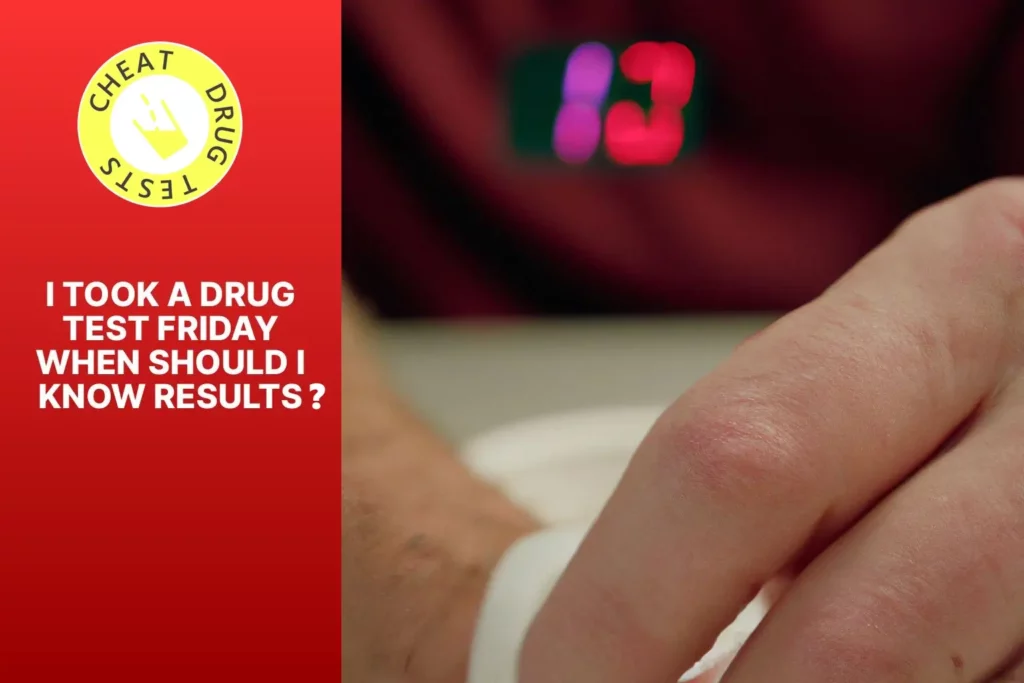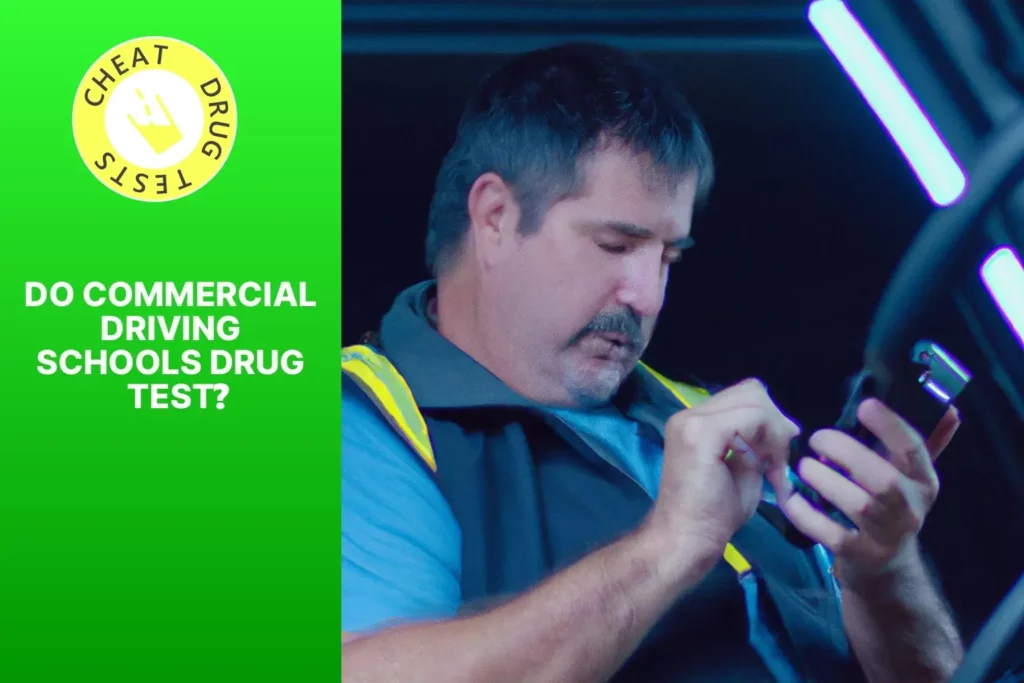Exploring the mysterious labyrinth of drug testing can be daunting. But one test gaining traction is the saliva drug test. It’s non-invasive, accurate and simple to use. Preferred by employers and law enforcement, it works by substances in the body entering the bloodstream and being absorbed by mucous membranes in the mouth. It’s ideal for detecting recent usage, most notably in 24-48 hours; making it effective for determining DUI impairment or workplace testing. Even more impressive is its real-time results within minutes.
A NHTSA study revealed a 98% correlation rate between oral fluid testing and blood testing for THC. Showcasing the reliability and validity of this method for accurately detecting substances.
What is a saliva drug test?
A saliva drug test is a non-invasive method used to detect drugs in a person’s system. Collecting a sample of saliva is done with a swab inside the mouth. This sample is tested for drugs like fentanyl, LSD, MDMA, crystal meth, cocaine, marijuana, or oxycodone.
Saliva drug tests are easy and quick. Unlike other tests that require urine or blood samples, saliva tests are not uncomfortable. This makes them useful when immediate results are needed, such as DUI checkpoints or workplace screenings.
Accuracy makes saliva drug tests reliable. Some drugs can be detected for a short period of time, while others can be detected for longer. For example, marijuana can be detected up to 24-48 hours after use.
The history of saliva drug testing goes back decades. It was first used by law enforcement agencies to identify drivers under the influence of drugs. Over time, technology has made these tests more sensitive and precise.
How does a saliva drug test work?
A saliva drug test utilizes advanced techniques to analyze an individual’s oral fluid for the presence of drugs. By examining saliva samples, drug testing experts can determine the presence of substances such as fentanyl, LSD, crystal meth, cocaine, marijuana, oxycodone, and MDMA, which could be indicative of recent drug usage. The test involves collecting a sample and analyzing it using advanced laboratory equipment. This process helps to provide accurate and reliable results promptly. It is a non-invasive method that offers convenience and efficiency for various purposes, such as DUI investigations or workplace drug screening.
Furthermore, the saliva drug test works by detecting the presence of drug metabolites in saliva. Metabolites are substances produced by the body when it breaks down drugs. These metabolites can remain in saliva for a certain period, depending on the specific drug and individual factors. The test generally focuses on identifying active drug usage within the previous few days, unlike other drug tests that may detect drug use from weeks or months prior. This makes saliva drug testing particularly suitable for detecting recent drug consumption.
Additionally, the collection process for a saliva drug test is simple and quick. A collection device is placed in the mouth, typically under the tongue or against the cheek, to absorb saliva. The device is then sealed and sent to a laboratory for analysis. The saliva samples are examined using advanced techniques to detect the presence of specific drug metabolites accurately.
It is essential to note that the accuracy and reliability of saliva drug tests have been validated by scientific studies and established protocols. These tests are designed to detect even trace amounts of drugs in saliva, ensuring accurate results.
Collecting your saliva for a drug test is like giving a DNA sample, but without the crime scene investigation drama.
Collection process
To do a saliva drug test, a specimen collector will provide the subject with a special collection device. This could be a swab or saliva collector. The subject must put the device in their mouth and move it around to get a sample. Then they give it back to the collector.
It is important that the subject does not eat, drink, or smoke for 10 minutes before the test. Drooling or spitting should also be avoided.
Saliva testing is fast and non-invasive compared to other methods like urine or blood tests. It is also simple and easy to use.
Healthline.com says these tests can detect marijuana, cocaine, amphetamines, methamphetamines, opioids, and benzodiazepines.
Detection window
The detection window is the time period when a saliva drug test can recognize drugs in someone’s system. It varies, depending on what drug is being checked for, how often it’s used, and how fast the person’s metabolism is.
To understand the detection window better, look at this table of approximations for common substances:
| Substance | Approximate Detection Window |
|---|---|
| Marijuana | Up to 24-48 hours |
| Cocaine | Up to 1-2 days |
| Amphetamines | Up to 2-3 days |
| Opiates | Up to 1-3 days |
| Benzodiazepines | Up to 1-4 days |
These are just estimates and could be different for different people. See a doctor for specific drug info and detection windows.
Some drugs can be detected for a short time, while others can stay in saliva for longer. Marijuana usually can be seen in 24-48 hours, yet certain benzodiazepines may show up to 4 days later.
Follow the instructions of the testing device or doctor. Drug use, oral health, and medicines can all affect the results. Talk to medical professionals for help.
Knowing the detection window assists people in making smart decisions about drugs before a saliva test. It’s important to be aware of it, to avoid bad outcomes.
Be informed, be careful, and take care of yourself.
Testing for specific substances
It’s important to know the detection windows for substances commonly tested for. These include:
- Marijuana (THC): 24-72 hours
- Cocaine: 24-48 hours
- Amphetamines (including methamphetamine): 24-48 hours
- Opiates (including heroin and morphine): 24-48 hours
- Benzodiazepines: 24-72 hours
These time frames can vary depending on factors, such as frequency and dosage. Some tests may even screen for additional substances.
Highly sensitive equipment is used to ensure accurate results. These tools detect even trace amounts of substances in saliva.
If you or someone you know may be subject to a saliva drug test, avoid using substances within the detection window. This will help to avoid negative consequences from a positive test result.
Stay informed and take precautions to protect your health.
The importance of saliva drug testing
Saliva drug testing is an important tool for detecting drugs in a person’s system. It offers convenience, accuracy, and reliability, making it great for various settings like road stops, workplaces, and rehab centers.
The advantage of saliva testing is its simplicity. A sample of saliva is quickly collected using a swab or other tools, and drug traces can be found in minutes. This avoids uncomfortable procedures like blood or urine tests and gives results right away.
Additionally, saliva testing can pinpoint particular substances. Drugs like fentanyl, LSD, MDMA, crystal meth, cocaine, marijuana, and oxycodone can all be detected. Each has different metabolic pathways and detection times in saliva, which helps professionals interpret results accurately.
Saliva tests are especially useful in cases where drug impairment needs to be determined quickly, such as DUI checkpoints or workplace safety screenings. Plus, the non-invasive nature of the tests makes them more agreeable to those being tested.
Pro Tip: Make sure you follow proper collection procedures and handle samples carefully for accurate results with saliva drug testing. Keeping the sample intact during the testing process is key to getting reliable outcomes.
Common substances detected by saliva drug tests
A saliva drug test is designed to detect various substances that may be present in the saliva. It utilizes advanced technology to analyze the saliva sample and identify the presence of common drugs and substances. These tests are commonly used in DUI cases, workplaces, and other settings where drug use is a concern.
- Fentanyl: This powerful synthetic opioid can be detected by saliva drug tests, providing crucial information about potential drug abuse or accidental exposure.
- Alcohol: Saliva drug tests can effectively detect the presence of alcohol, allowing for the monitoring of alcohol consumption and impairment.
- Stimulants and hallucinogens: Substances such as LSD, MDMA, crystal meth, and cocaine can be detected in saliva samples, indicating recent usage and potential impairment.
- Cannabis: Saliva drug tests are capable of detecting marijuana use, offering insight into both recreational and medicinal usage.
- Prescription drugs: Oxycodone, a commonly prescribed opioid, can also be detected by saliva drug tests, helping to determine compliance with medication regimens.
It is important to note that the detection window for each drug may vary depending on factors such as frequency of use, dosage, and individual metabolism. Additionally, saliva drug tests provide a non-invasive alternative to urine or blood tests, making them a convenient option for on-site or rapid screening.
It is worth mentioning that saliva drug tests have gained credibility in the medical and legal fields due to their accuracy in detecting drug use. According to a study conducted by the Journal of Analytical Toxicology, saliva drug tests demonstrated a high level of agreement with urine and blood tests, making them a reliable tool for substance abuse detection. Source: Journal of Analytical Toxicology
Say goodbye to your worries about fentanyl – this saliva drug test will make sure you’re not singing your final notes.
Fentanyl
Fentanyl: Key Points to Know:
- Detection: Saliva tests are precise for detecting the presence of fentanyl. This makes it useful for work and law enforcement.
- Potency: Fentanyl is 50 times stronger than heroin and 100 times stronger than morphine. It can be dangerous when used recreationally or without medical guidance.
- Medical Use: Fentanyl is used for serious pain, specifically when other opioids don’t work. It’s available in patches, lozenges, and injections.
- Illicit Use: People use fentanyl for the euphoric feeling. Illicitly-made forms of the drug may contain other substances or be sold as fake prescription pills. This increases the risk of a deadly overdose.
NIDA notes that synthetic opioids, like fentanyl, were responsible for 70% of opioid-related deaths in the US in 2019.
DUI-related substances (alcohol, marijuana, cocaine, etc.)
Saliva drug tests are a popular, non-invasive way to detect recent use of DUI-related substances. Such as alcohol, marijuana, and cocaine. Five key points to remember about these substances:
- Alcohol: Tests can detect it within the past few hours. Important for DUI cases.
- Marijuana: THC and metabolites can be detected. Detection window varies with use.
- Cocaine: Molecule and metabolites can be identified. Detection time is typically one-two days.
- Other Stimulants: Tests can detect amphetamines and methamphetamines.
- Polydrug Use: Tests can detect multiple substances in a person’s system.
Saliva drug tests are an important tool for law enforcement. As well as a deterrent for those who might drive under the influence. A recent example: A young driver was pulled over, denying substance use. But a saliva drug test revealed marijuana in their system. Resulting in legal action and ensuring the safety of the road.
Other commonly tested substances (LSD, MDMA, crystal meth, oxycodone)
Saliva drug tests can detect LSD, MDMA, crystal meth, and oxycodone. This table shows the detection windows for each:
| Substance | Detection Window |
|---|---|
| LSD | 1-4 hours |
| MDMA | 1-3 days |
| Crystal meth | 1-4 days |
| Oxycodone | 1-2 days (immediate release), 3-4 days (extended release) |
It’s important to know that saliva drug tests may not be able to detect long-term substance abuse. If anyone needs help, they should talk to healthcare professionals or rehab programs. Employers should also make sure they have rules in place about drug testing. Educating employees and offering support can create a safer workplace.
Finally, knowing what substances are detected in saliva drug tests is essential for making healthy decisions. People should be aware of the detection windows and get help if needed. This is key for leading a healthier future.
Benefits and limitations of saliva drug testing
Saliva drug testing has lots of pluses and minuses in uncovering drugs in a person’s system. Check out this table to see what these are:
| Benefits | Limitations |
|---|---|
| Non-invasive | Limited detection window |
| Easy to administer | Food or drink intake can affect results |
| Quick results | Not as sensitive as urine or blood tests |
| Tampering is difficult | Not great for long-term drug use detection |
Saliva drug testing is great! Non-invasive and easy to administer, it helps detect recent drug use with quick results. But, it has the downside of having a limited detection window compared to urine or blood tests. Also, food or drink intake can change the accuracy of the results.
Take advantage of saliva drug testing to stay healthy and informed. Check it out today!
Conclusion
Saliva drug tests are a great way to detect drugs in someone’s system. They can find recent drug use, like fentanyl, cocaine, marijuana, and even prescription drugs like oxycodone.
For the test, a small swab is placed in the mouth to collect saliva. This sample is then analyzed for any drugs present. The test can even identify long-term drug use, making it perfect for DUI screenings, workplace drug testing, and more.
Plus, the saliva drug test is fast and non-invasive. It doesn’t require any uncomfortable procedures or special equipment. Results usually come within minutes. Also, the sample collection process is simple and hard to tamper with, so results are reliable. And since drugs can be detected in saliva shortly after ingestion, this test has a wide window for detection.
You can protect yourself and your community by using saliva drug tests. This ensures safety and security, allowing you to identify any issues quickly and take the right actions. Start using this effective screening method today!

Frequently Asked Questions
FAQs about How Does a Saliva Drug Test Work
1. What is a saliva drug test?
A saliva drug test, also known as an oral fluid drug test, is a type of drug screening method that detects the presence of drugs or their metabolites in a person’s saliva. It is commonly used to identify recent drug use.
2. How does a saliva drug test work?
A saliva drug test involves collecting a sample of saliva from the person being tested using a swab. The swab is then placed in a test device that detects the presence of specific drugs. The test device typically uses antibodies to detect the drugs and produces a positive or negative result.
3. What drugs can be detected with a saliva drug test?
Saliva drug tests can detect a wide range of drugs, including fentanyl, alcohol, LSD, MDMA (ecstasy), crystal meth, cocaine, marijuana, and oxycodone. The test can identify both illegal drugs and prescription medications.
4. How long can drugs be detected in saliva?
The detection window for drugs in saliva varies depending on the drug. Generally, saliva drug tests can detect drug use within the past 24 to 48 hours. However, some drugs like marijuana can be detected for a longer period, up to 72 hours or more.
5. Can a saliva drug test be used for DUI testing?
Yes, saliva drug tests are commonly used for DUI (driving under the influence) testing. The test can determine if a person has recently used drugs, including substances that impair driving ability. It is a non-invasive and convenient method for law enforcement to screen for drug-impaired driving.
6. Is a saliva drug test accurate?
Saliva drug tests are generally considered to be highly accurate. They have a low risk of false-positive or false-negative results when conducted and interpreted correctly. However, it is essential to follow proper testing procedures and use reliable testing devices to ensure accurate results.
Cheat Drug Test articles & impartial reviews are funded by affiliate commissions, at no extra cost to you, our awesome readers. Learn more



